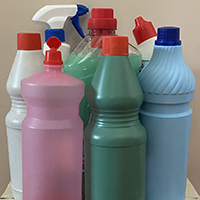 Smart Citations
Smart CitationsSee how this article has been cited at scite.ai
scite shows how a scientific paper has been cited by providing the context of the citation, a classification describing whether it supports, mentions, or contrasts the cited claim, and a label indicating in which section the citation was made.
Caustic ingestion in children: A 6-year retrospective study
Some aspects of the management of caustic ingestion in children are still debated. We aimed to determine the predictive value of epidemiological and clinical features of caustic ingestion, and to define guidelines adherence. This is a retrospective study on children ≤18 years referred to our Emergency Department over 6 years because of caustic ingestion. Statistical significance at p<0.05. Overall, 107 caustic ingestions were identified, mainly accidental <5 years (87.85%). Bleach was the most common caustic (46.73%). Forty-six patients underwent endoscopy; 57.38% children who should have endoscopy on guidelines, actually did not (p<0.0001), but no complications were reported. No or minimal lesions were reported in asymptomatic children; ≥2 symptoms correlated with the severity of lesions (p<0.0002). Therapy of severe cases was correct; overtreatment was observed for minor injuries (p<0.0001). Asymptomatic children after caustic ingestion have a very low-probability of moderate-severe endoscopic lesions, and the risk of severe damage increases proportionally with ≥2 symptoms. Prospective studies are needed to evaluate the efficacy of intensive clinical observation versus EGD on low-risk children to identify those with clinically relevant esophageal lesions.
How to Cite
PAGEPress has chosen to apply the Creative Commons Attribution NonCommercial 4.0 International License (CC BY-NC 4.0) to all manuscripts to be published.

 https://doi.org/10.4081/ecj.2020.9044
https://doi.org/10.4081/ecj.2020.9044




